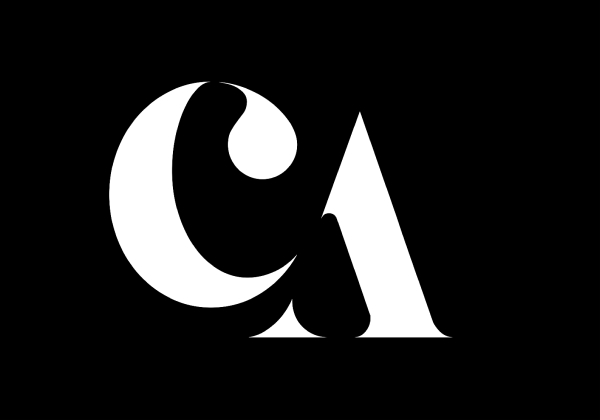EDIPT
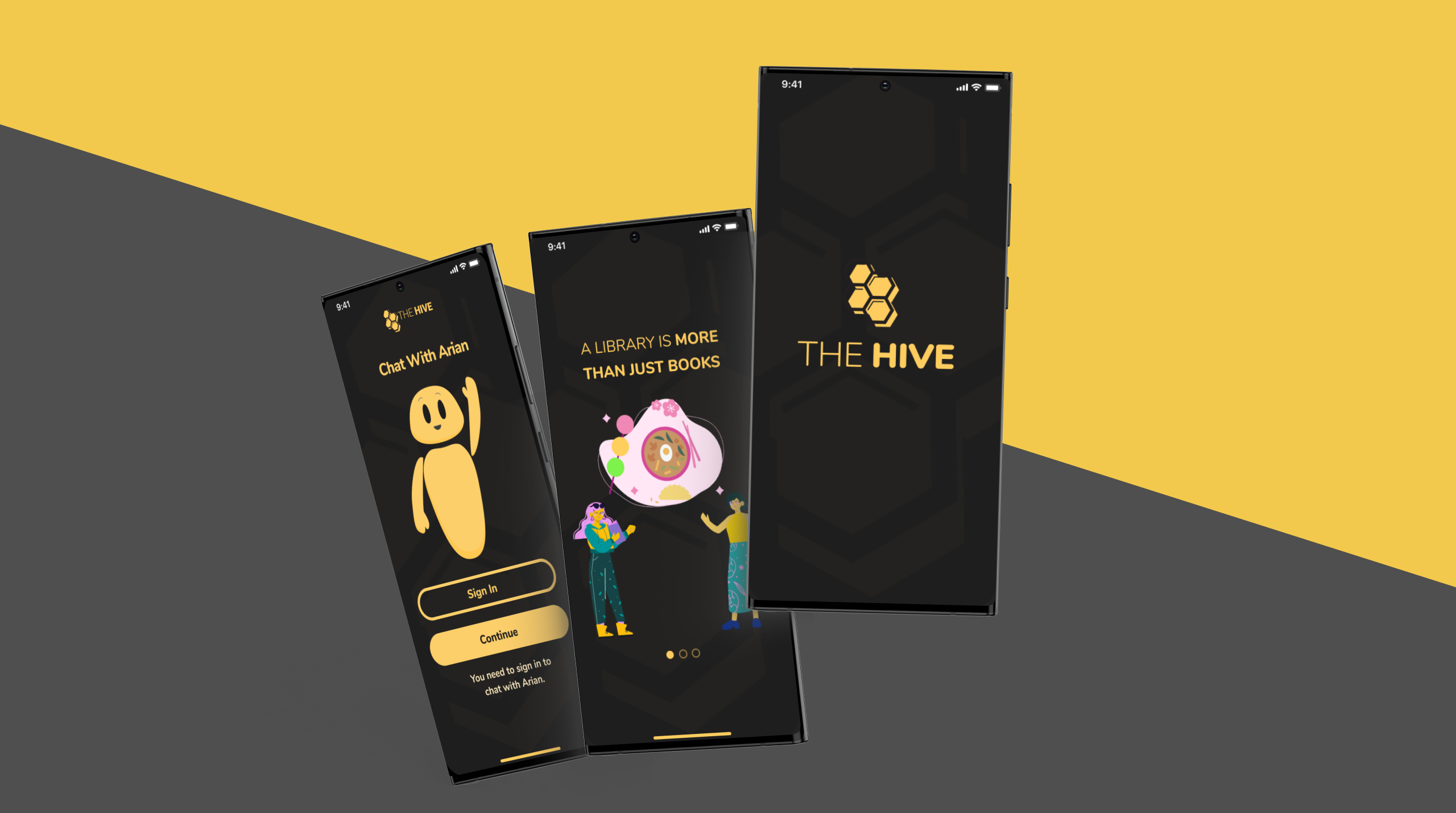
THE HIVE
Library usage has fallen 30% since 2005, with only 18% of adults accessing the library digitally. There is a need for a space that can enable and nurture a sense of community, wellbeing and intellectual growth to empower people to thrive in the midst of these changes. We were hired to strengthen their relationship with the community as well as to facilitate better adult learning opportunities for people looking to upskill, change career or retrain.
PROJECT
THE HIVE APP
- Role - UX Designer
- Tools - Axure, Sketch, Marvel, InVision,
- Team - (Catherine Achieng, Jessica Harrington, Diego Lambertucci, Sim Barot
- Timeline - 6 Weeks
- Key Deliverables - Domain research, Competitive analysis, Subject Matter Expert (SME) Interviews, Affinity diagramming, User personas, User journey maps, Information Architecture, Paper prototyping, Concept testing, Usability testing, Mid-fidelity wireframes, App Map, inVision prototype, Annotated wireframes
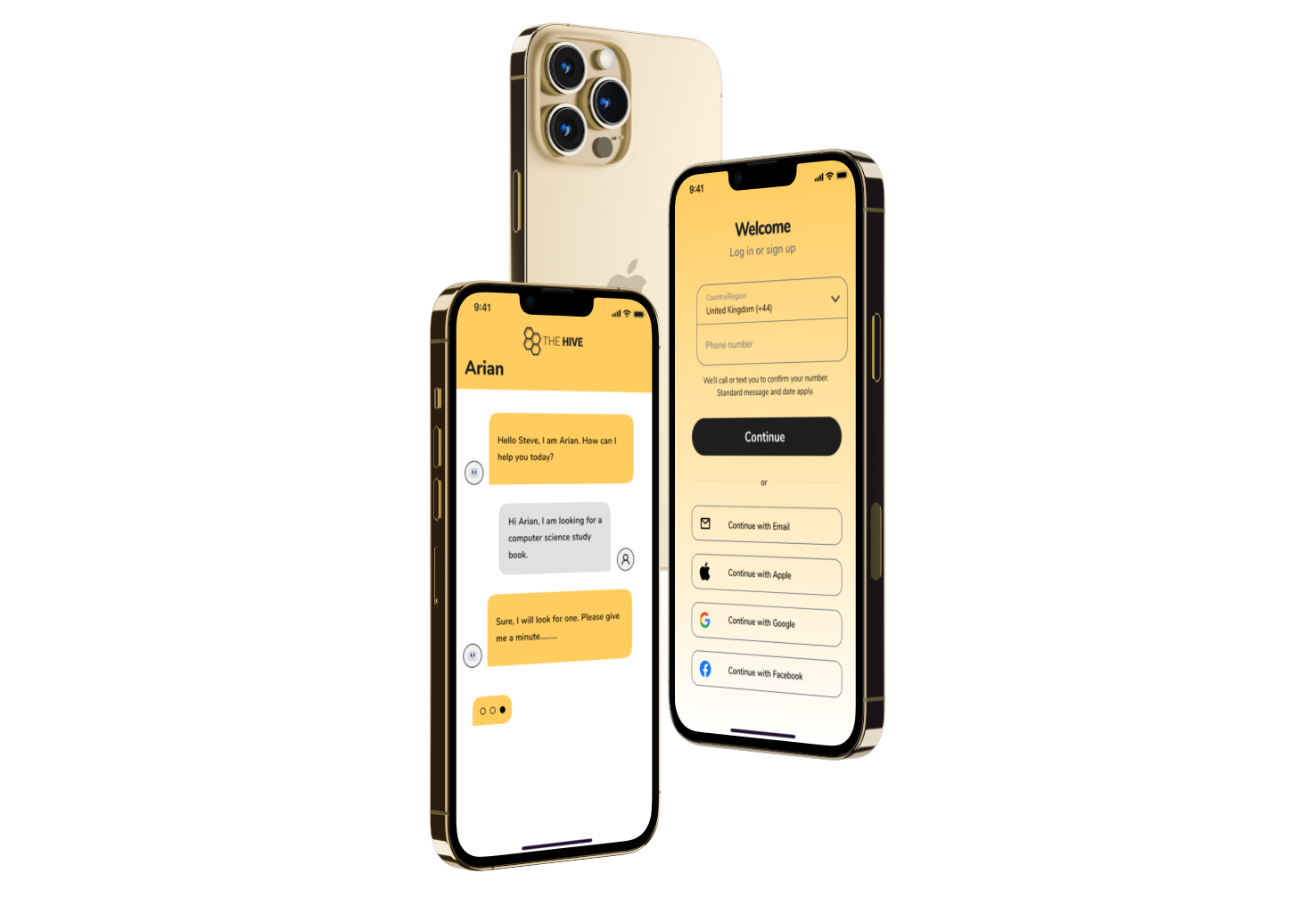
THE CHALLENGE
Since it wasn’t possible to address every aspect of the current website for this project, our goal was to identify what content and functionality was the most important to the widest array of citizens so that we could prioritise the features that will be the most impactful to current and potential users.
OUR GOALS
The main purpose of the project was to create better conditions for the next generation of local public services where technology is an enabler rather than a barrier to service improvements, and access to these services are a delightful experience for citizens and officials to use.
APPROACH
THE APPROACH THAT WE FOLLOWED
To complete the project we followed the Jesse James Garrett’s method knows as the Elements of User Experience. This method allowed us to cut through the complexity of user-centred design. We decided to use this method as gave us the big picture of the user experience development, from strategy and requirements to information architecture and visual design.

EMPATHISE
DISCOVERY PHASE
We started with the very first stage of the design process. We wanted to gain an empathic understanding of the problem that we were trying solve and this involved discovering different types of ways we could conduct our research.
We were confused when we began our research, who were the library’s competitors? We decided to begin with an analysis of several libraries as a means to research the field. As a team, we conducted various types of research to find different outcomes that could give us some insights on how the Users interact with the Libraries facilities and also the Digital platforms that are attached to the local libraries, or give courses or are a digital library. The research included,
- Competitive Analysis
- Subject Matter Expertises Interviews
- Contextual Inquiry
- Ethnographic Research

Competitors
RESEARCH
We began by investigating the wider ‘self-improvement’ sector with a particular focus on services that can be provided to aid people in navigating social change that potentially impacts on their lives. This included areas such as Jobs, Academia, access to medical facilities, training, culture, wellbeing initiatives to name a few.
Our main goal was to learn what role can spaces such as libraries play in aiding their existing and future users, or their communities, to achieve their self-improvement, career or business goals and what do users normally seek within places such as these.
What did we find?
COMPETITIVE ANALYSIS
By conducting a competitive analysis we discovered the following;
- All 5 libraries had significant service offerings from computers and courses to events to clubs etc.
- Of the 5 libraries we covered in our analysis only 2 had purpose-built websites and only 1 had an app.
- For 3 Libraries , digital presence was restricted to a single page within the larger local government site.
- Some libraries were getting around this by using facebook and twitter to communicate with their communities
SME INTERVIEWS
By conducting a competitive analysis we discovered the following;
- 100% felt that learning was a core part of the library’s activities
- 50% mentioned digital literacy was a vital part of the library’s offering.
- 100% were focused on providing site-specific community events.
- 50% of our SMEs were frustrated by lack of promotion or marketing channels for their libraries.
- 75% were frustrated at understaffing
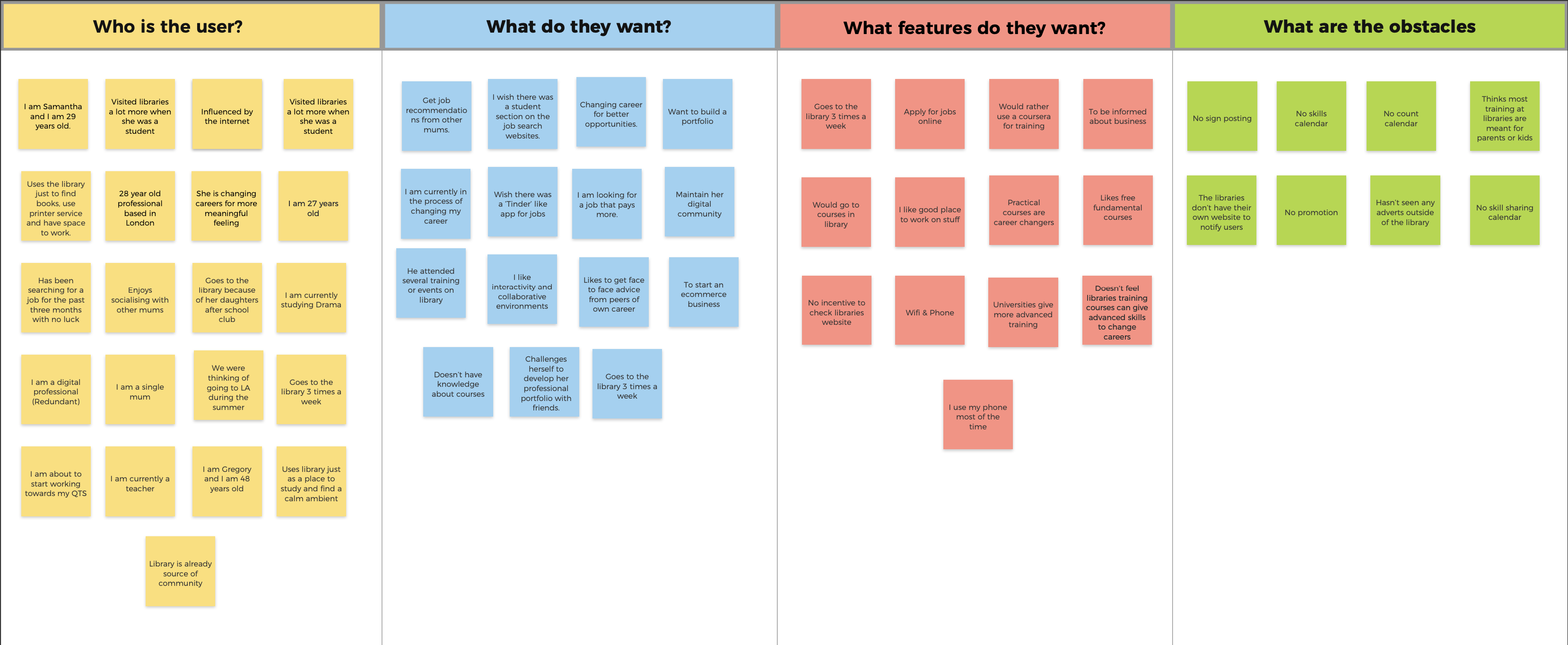
Analysing and Synthesising
What did we find?
USER INTERVIEWS
From our initial research, we were able to conclude that the library is ‘More than just books’ and we wanted to get more insights so that we learn more about potential users. We conducted user interviews with a main focus on studying both users and non-users behaviours within the library. These users are those navigating the field of self-improvement to help themselves deal with change in their environment – in this case technological change.
60%
Of survey participants believe it to be a space for quiet study.
90%
of survey participants believe the library is just a space for books
50%
Of survey participants state that digital communities are important to them
ETHNOGRAPHIC RESEARCH
For the Ethnography research, we focused our attention on how users interact with the libraries’ facilities and their bullet boards, this gave us insights on how the library operates, how activities are advertised and the participation of the community. We got the following insights;
Library users are in between 24 to 50 in age
Library spaces need to to be inviting and accessible
Libraries are not promoting the services they offer very well.
Bulletin Boards and Notice Boards are an outdated way of communicating and reaching out to their user base
CONTEXTUAL INQUIRY
- The need of users has evolved from simply a “borrow book service” .
- User now want access to high level learning, the need to stay current and have updated skill sets is what motivates users to self learn
- Users currently do not think of the library in the list of options they have
- Libraries are not promoting the services they offer very well.
- Bulletin Boards and Notice Boards are an outdated way of communicating and reaching out to the community,
- Libraries have not harnessed the digital space
DEFINE
AFFINITY MAPPING SESSIONS
We started with the very first stage of the design process. We wanted to gain an empathic understanding of the problem that we were trying solve and this involved discovering different types of way we could conduct our research
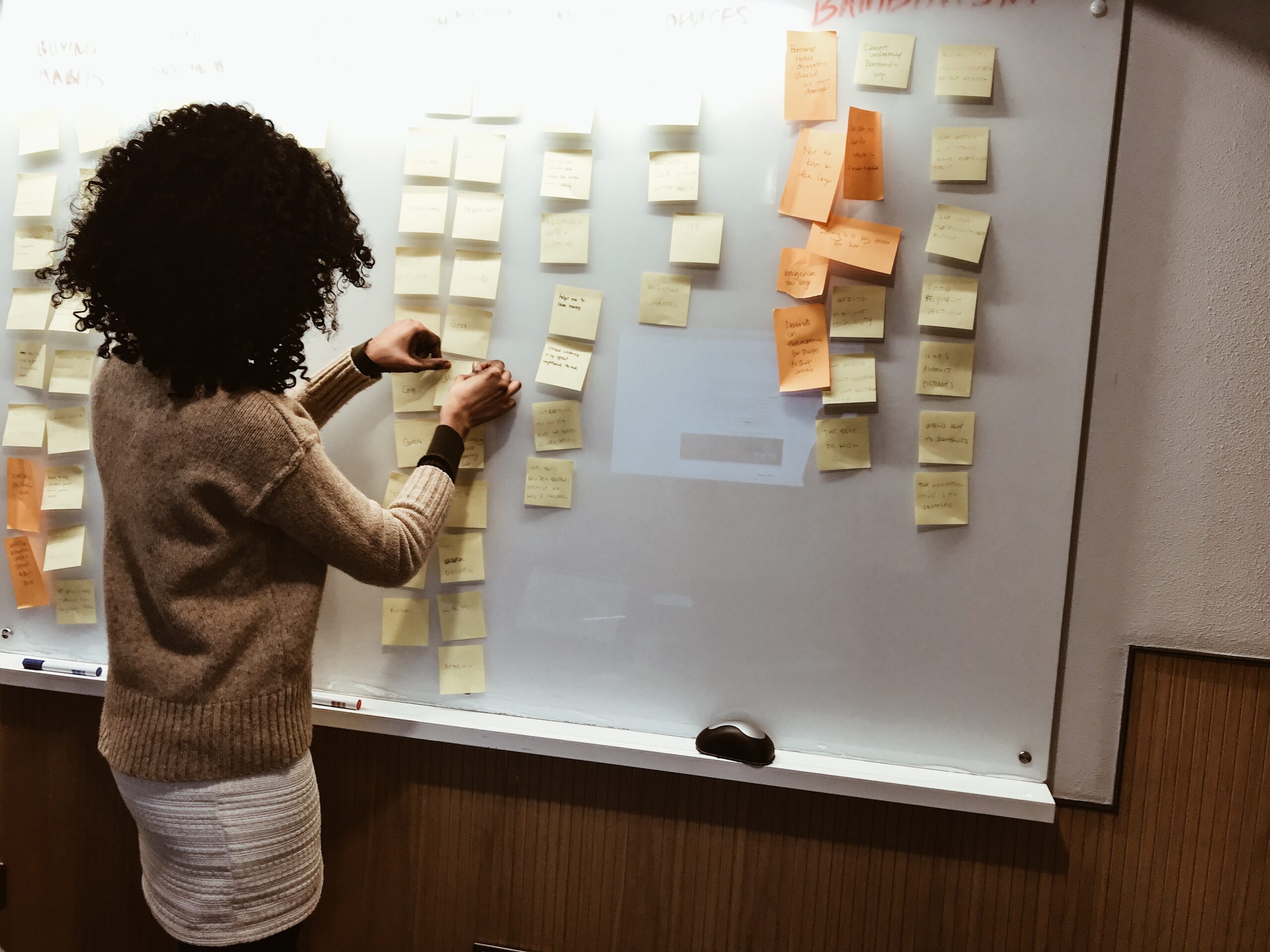
Affinity Mapping Session
Who are the users?
USER PERSONAS & JOURNEY MAPS
Below are the two proto personas–and their overlapping goals, motivations, needs, and pain points.
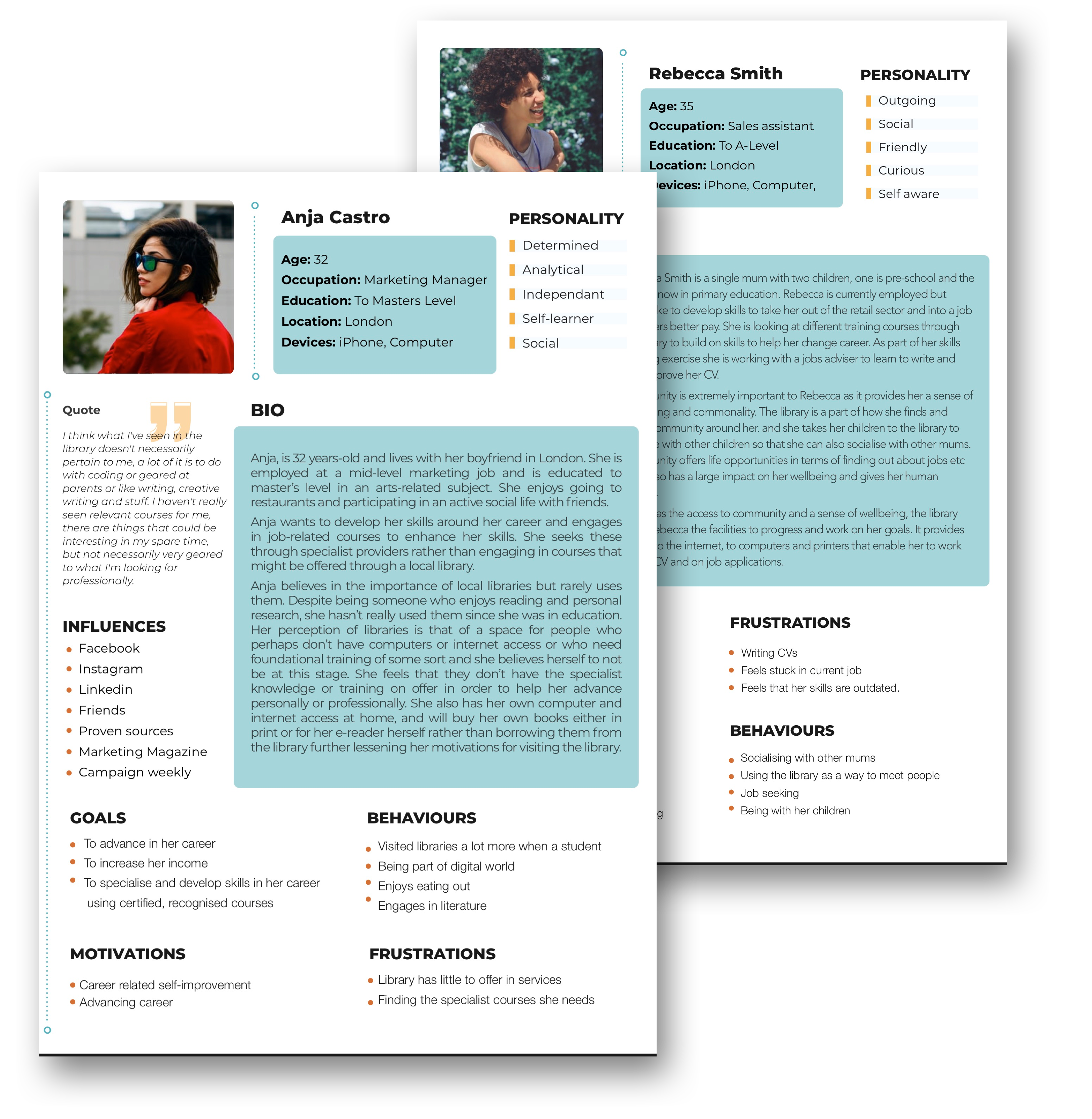
User Personas
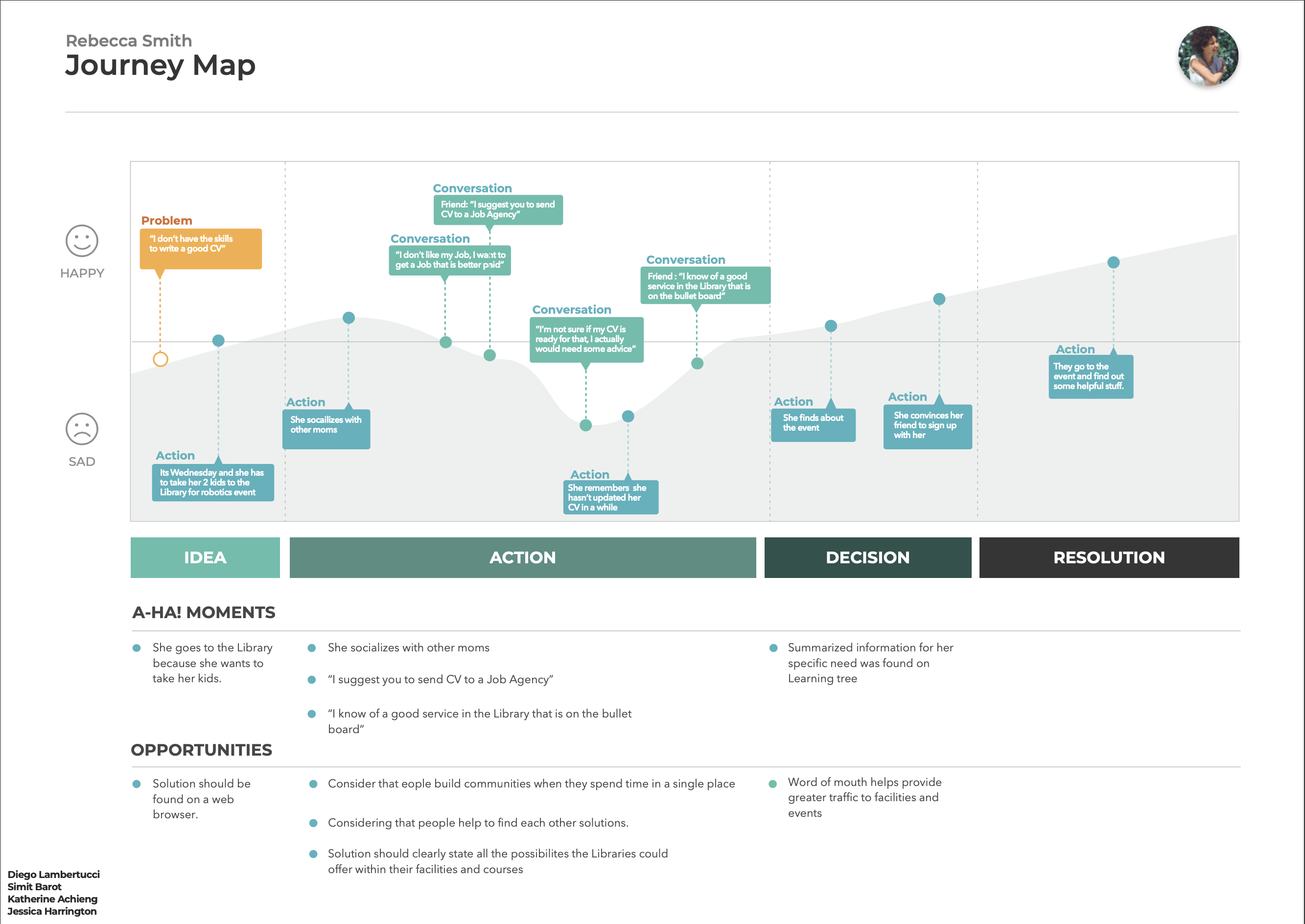
Journey Map
PROBLEM STATEMENT
After combining our understanding of the users goals and frustrations, we determined the opportunity and problem that The Hive needed to solve for. We synthesised the data from our research and formulated the product problem statement; We used this as a guide during the brainstorming and concepting phase.
“People who are feeling pressure to keep in step with the working world want to find forms of self-improvement because competition in employment is high, seeking change can be intimidating and the experience can feel isolating.”
“Offering a range of courses and events through a respected institution such as a library is a great way to give confidence and a sense of wellbeing to individuals and build communities around their shared interests.”
DESIGN PRINCIPLES
Our research insights helped us determine that our solution should provide the following benefits for users;
INFORMATIVE
We are authoritative but welcoming. The Library is a space where our users can feel confident to seek information, knowledge and guidance.
INVENTIVE
We need to extend our users understanding of the library not by discarding its historic purpose but by enhancing it. We need to reinvent and reassert its relevance to our users.
INVITING
The libraries digital space is an extension of its role as a respected and treasured institution. The library will counter this by offering friendliness and approachability in its design.
INSPIRING
The library’s history and its reputation should inspire trust and confidence in its offering but users need to feel that this is an exceptional institutional space.
INVOLVED
We are a place for our users to learn, to meet and to be with others, we are a place to seek guidance and support for questions about our local area.
INCLUSIVE
The libraries services are open to all users, their digital space should echo this inclusiveness and be accessible to everyone who wishes to engage with its services.
DESIGN PRINCIPLES
Our research insights helped us determine that our solution should provide the following benefits for users;

INFORMATIVE
We are authoritative but welcoming. The Library is a space where our users can feel confident to seek information, knowledge and guidance.

INVENTIVE
We need to extend our users understanding of the library not by discarding its historic purpose but by enhancing it. We need to reinvent and reassert its relevance to our users.

INVITING
The libraries digital space is an extension of its role as a respected and treasured institution. The library will counter this by offering friendliness and approachability in its design.

INSPIRING
The library’s history and its reputation should inspire trust and confidence in its offering but users need to feel that this is an exceptional institutional space.

INVOLVED
We are a place for our users to learn, to meet and to be with others, we are a place to seek guidance and support for questions about our local area.

INCLUSIVE
The libraries services are open to all users, their digital space should echo this inclusiveness and be accessible to everyone who wishes to engage with its services.
IDEATE
TYPES OF RESEARCH METHODS WE PERFORMED
This is where it all started, We needed to figure out what we wanted to get out of the site, what the users needs are and how we could best implement the project. To do so, we performed various types of research.
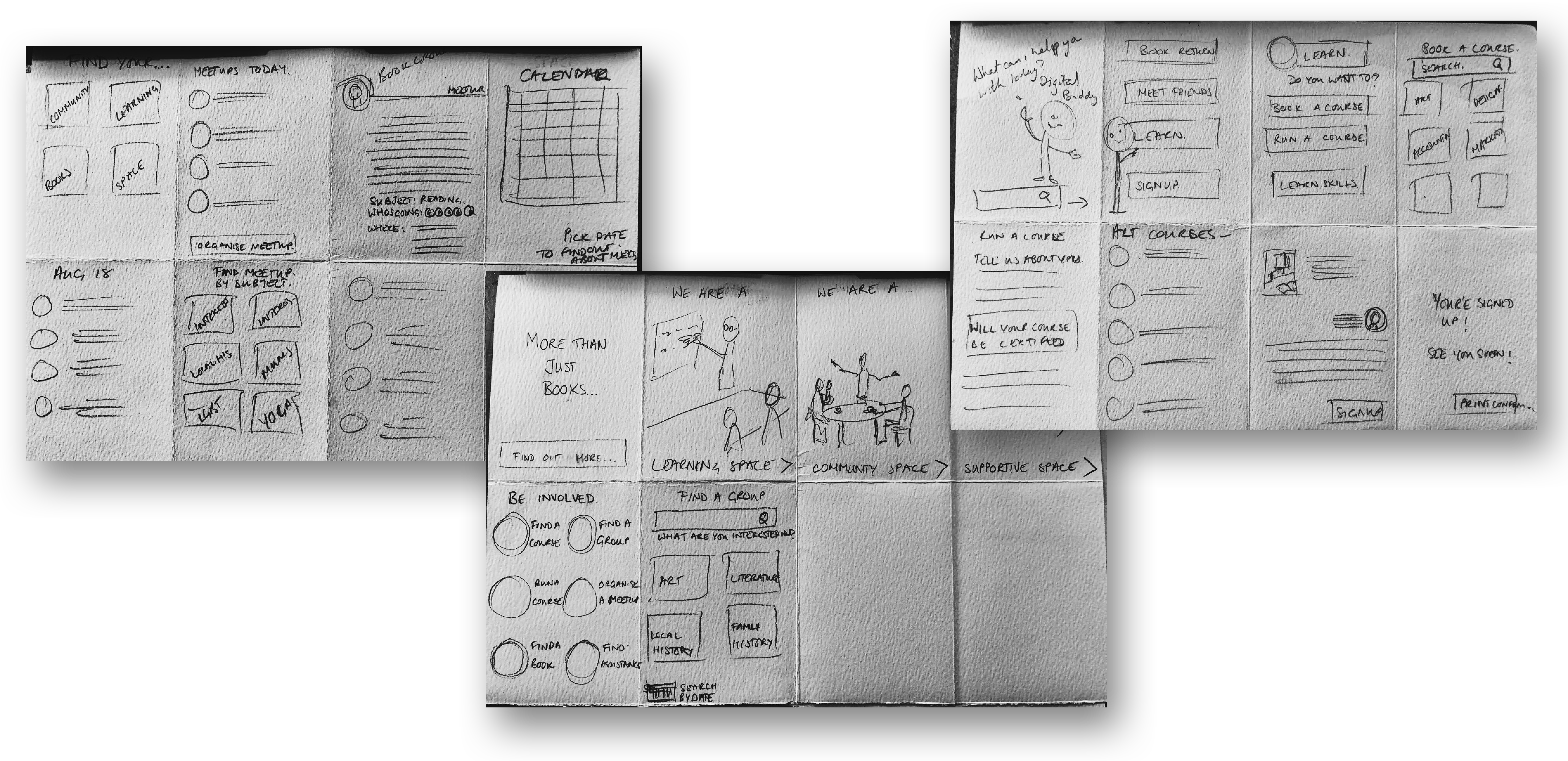
6-8-5 Sketches
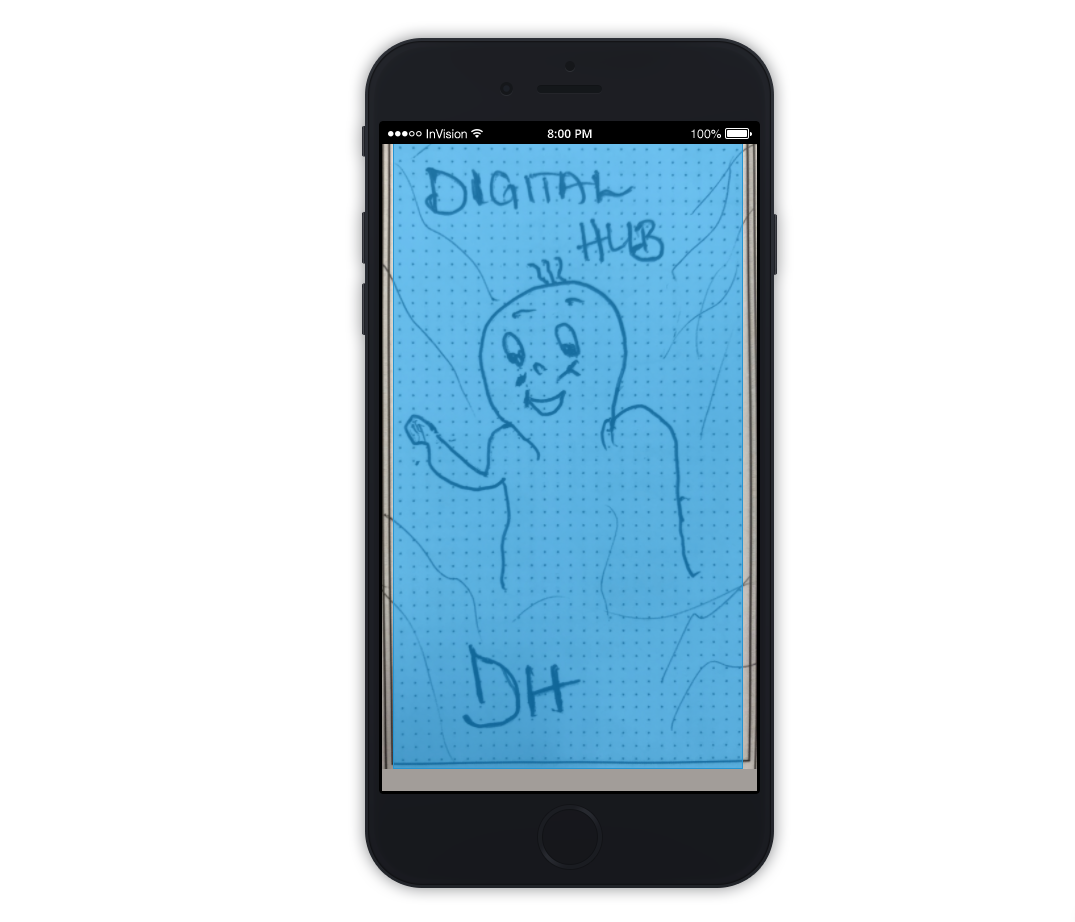
APP MAP
“People who are feeling pressure to keep in step with the working world want to find forms of self-improvement because competition in employment is high, seeking change can be intimidating and the experience can feel isolating.”
“Offering a range of courses and events through a respected institution such as a library is a great way to give confidence and a sense of wellbeing to individuals and build communities around their shared interests.”
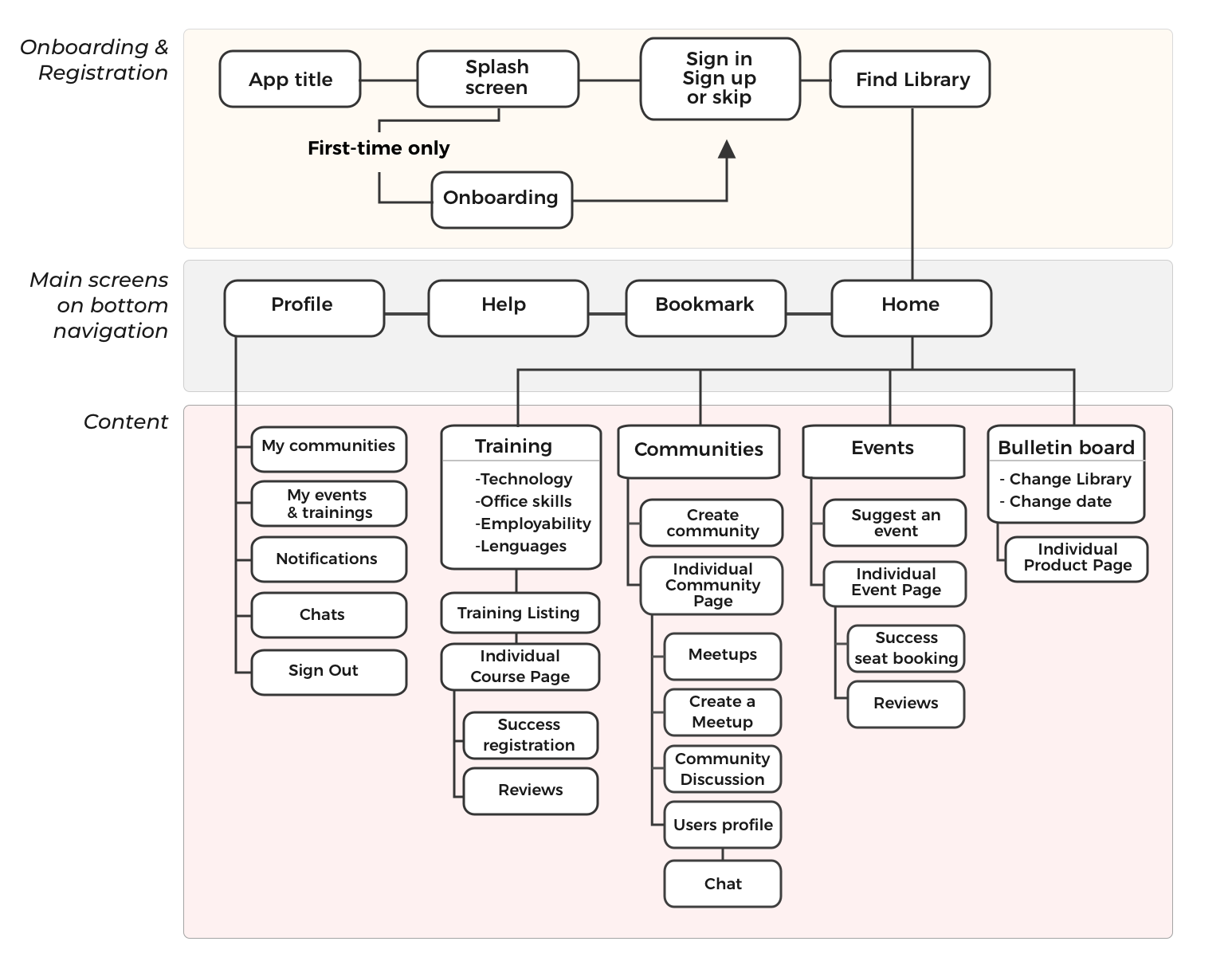
App map
STYLE GUIDE
“People who are feeling pressure to keep in step with the working world want to find forms of self-improvement because competition in employment is high, seeking change can be intimidating and the experience can feel isolating.”
“Offering a range of courses and events through a respected institution such as a library is a great way to give confidence and a sense of wellbeing to individuals and build communities around their shared interests.”
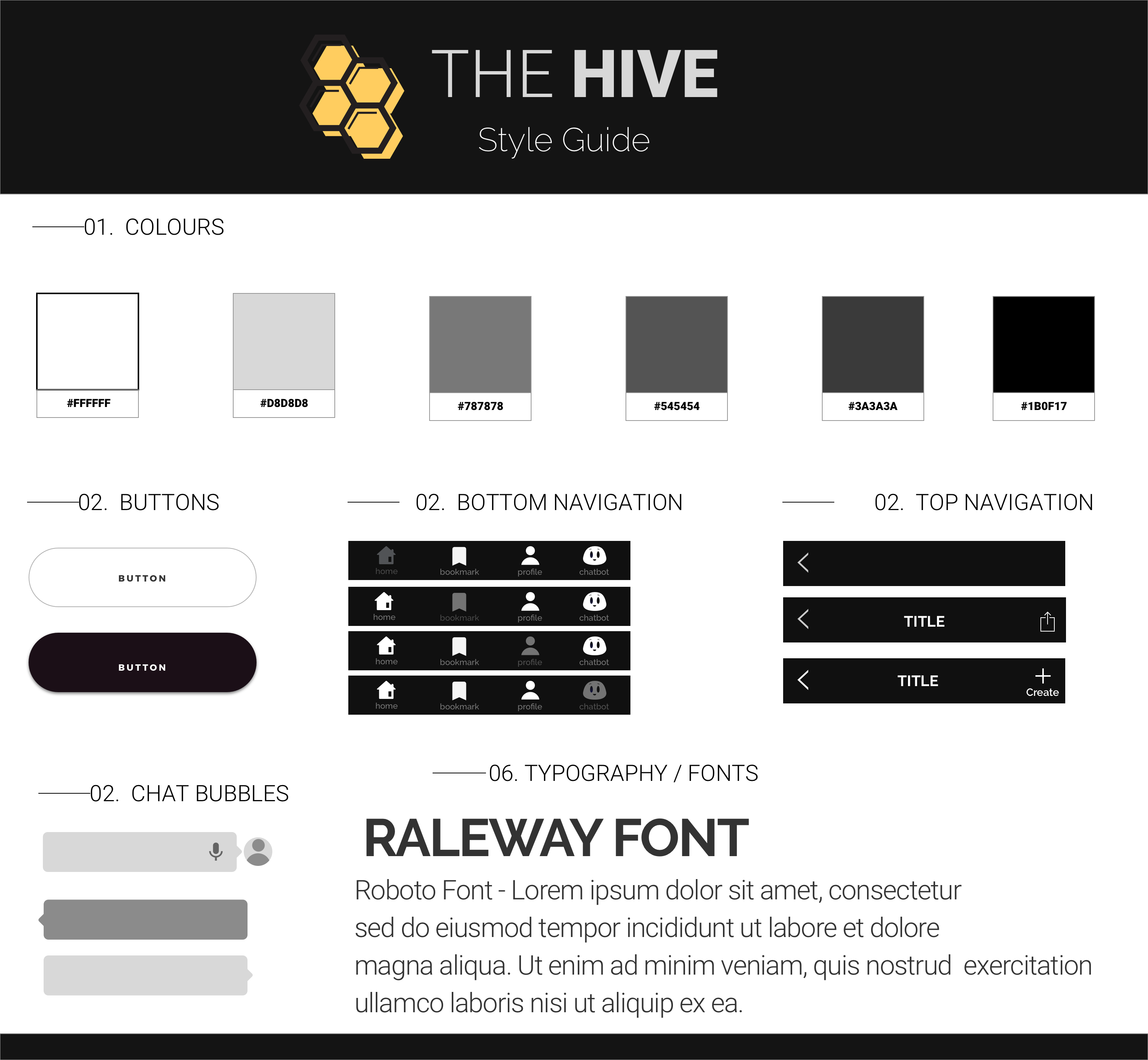
Style Guide
LOW-FIDELITY WIREFRAMES
We wanted to visualise the users experience when using the The Hive app. By creating wireframes, we were able to establish what goes where, without consuming too much time on aesthetics. The wireframes also allowed us to experiment and work out visual problems without spending too much time on the pixels.
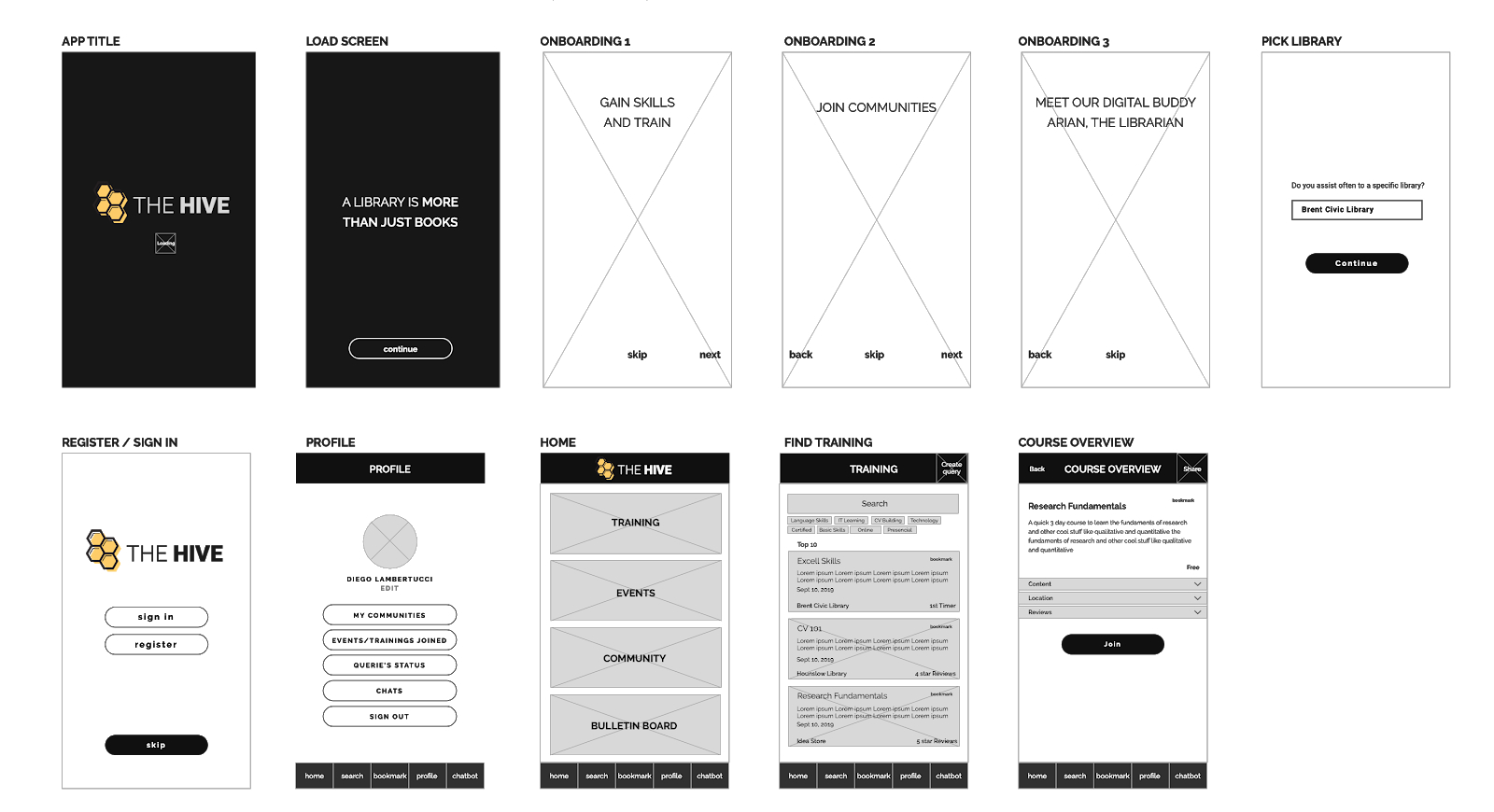
Low Fidelity Wireframes
PROTOTYPE
HIGH FIDELITY WIREFRAMES
We created and iterated high-fidelity screens. After feedback, we refined the designs to improve white space, decrease gradient usage, and clarify typography hierarchy. These changes improved alignment with the best mobile practices and created a more balanced look and feel.
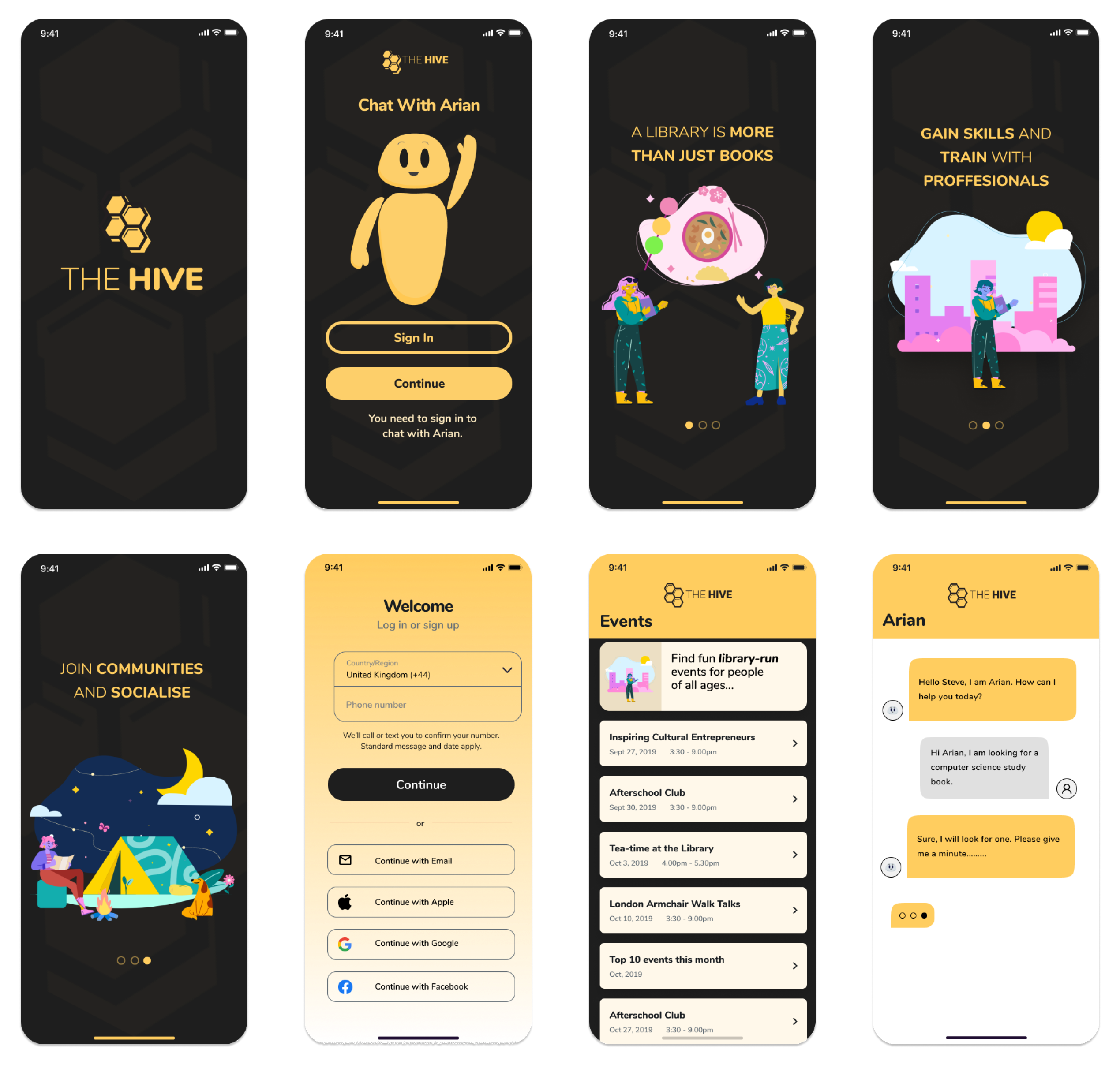
High Fidelity Wireframes
AXURE PROTOTYPE
Using our high-fidelity screens, we created a clickable prototype in Axure for a first-time user. The main goal of this prototype was to solve the persona’s problems that we had identified during the research synthesis phase of this project. We created all of the necessary screens for these flows and conducted a rough user testing with my peers where they were able to critique these screens prior to jumping into usability testing. View the Axure the prototype below by clicking on the button.
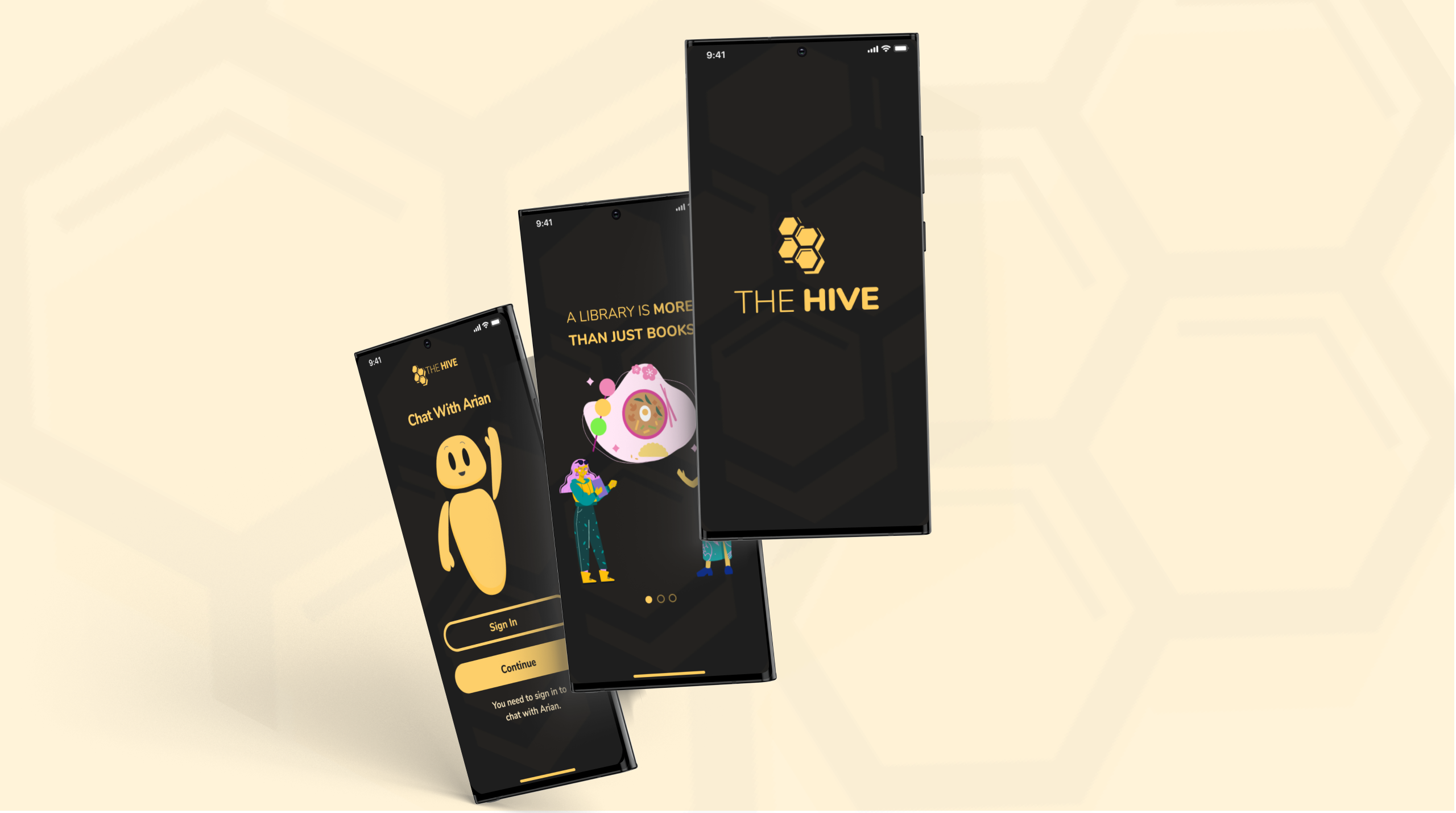
RESULTS
FUTURE PROJECT RECOMMENDATION
Since time was our biggest challenge we weren’t able to achieve everything we would have wanted to on this project. We therefore gave the client the following future recommendations;
- Increase our testing sample to include SMEs
- Handover to design team with feedback incorporated
- Perform Eye Tracking Analysis
- Perform Usability test with full designs
- Technical Feasibility
WHAT DID I LEARN?
The Hive project was an important lesson in the dangers of excessively using features. We got really excited by the insights and concepts that we tried to converge too many ideas into one application. The result of this was overly complex Information architectures and user flows that were redundant. I learnt a lot from this experience and I applied these lessons into next project.
My design thinking skills grew immeasurable over the six weeks that we worked to create The Hive. I was challenged to separate my self from the user and working within a team. I learnt the value of research as both an empathy and data building tool. I also learnt the value of crafting tools like personas, user stories, and style tiles that helped me to keep my focus on the user.
